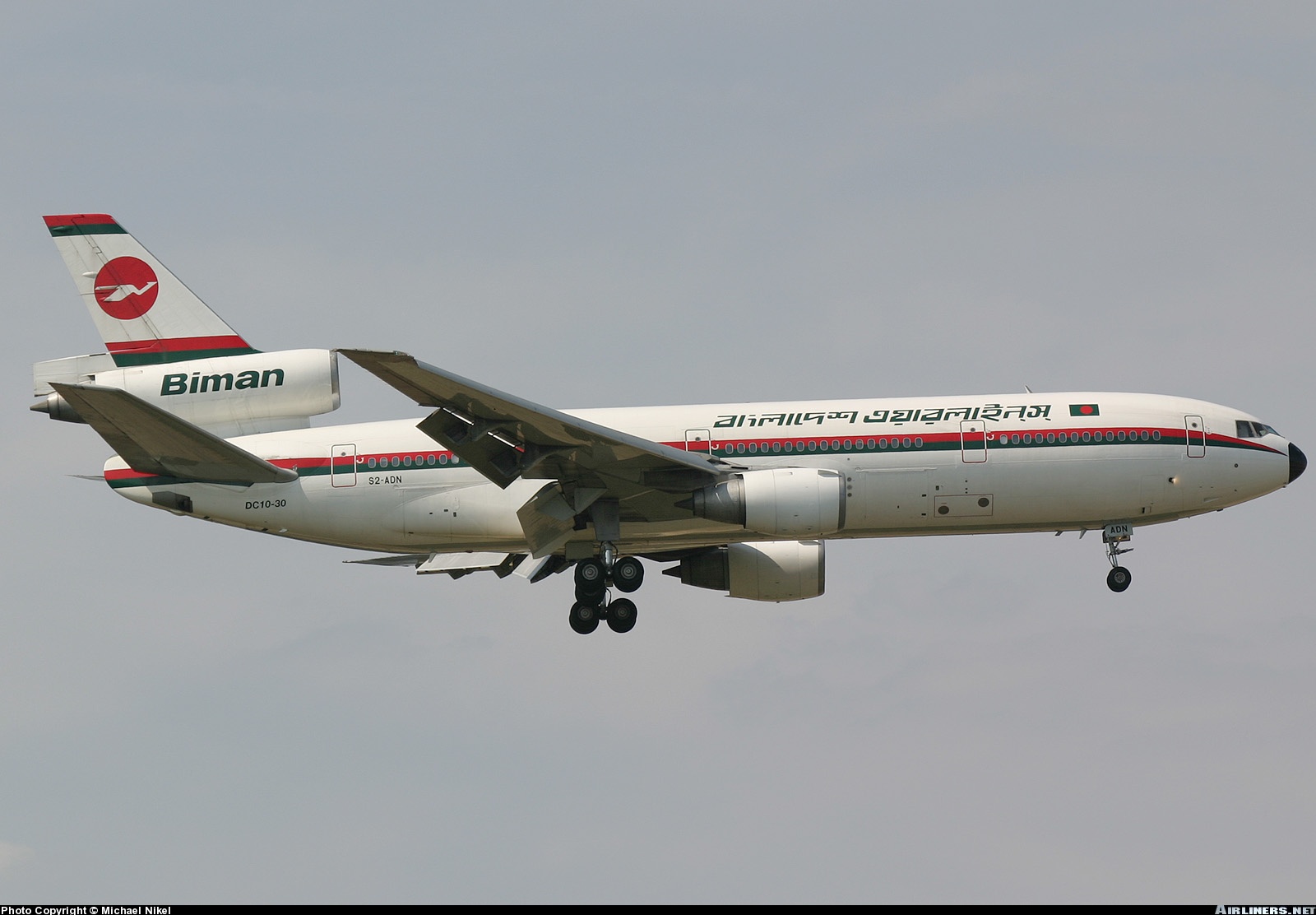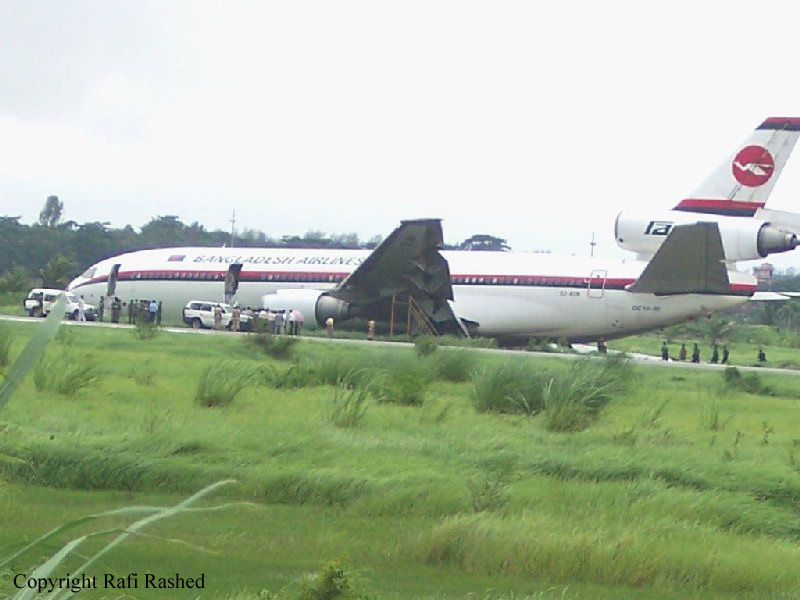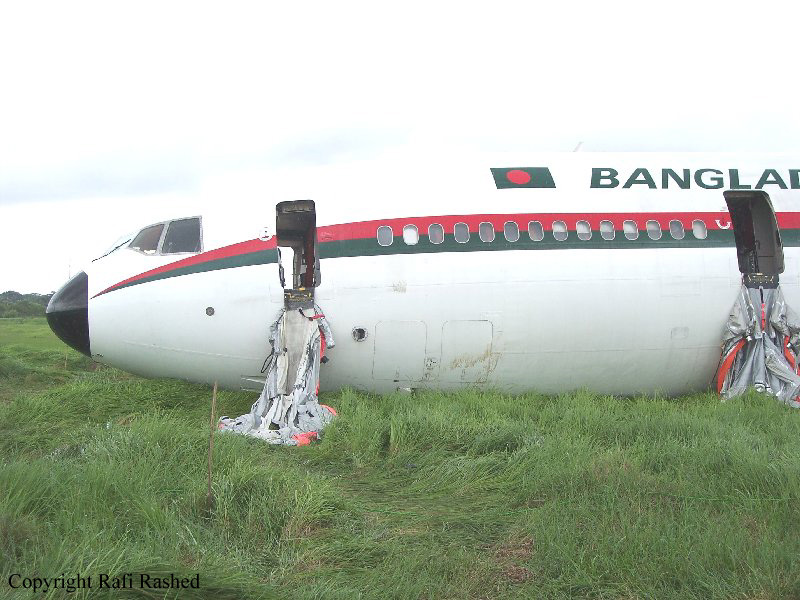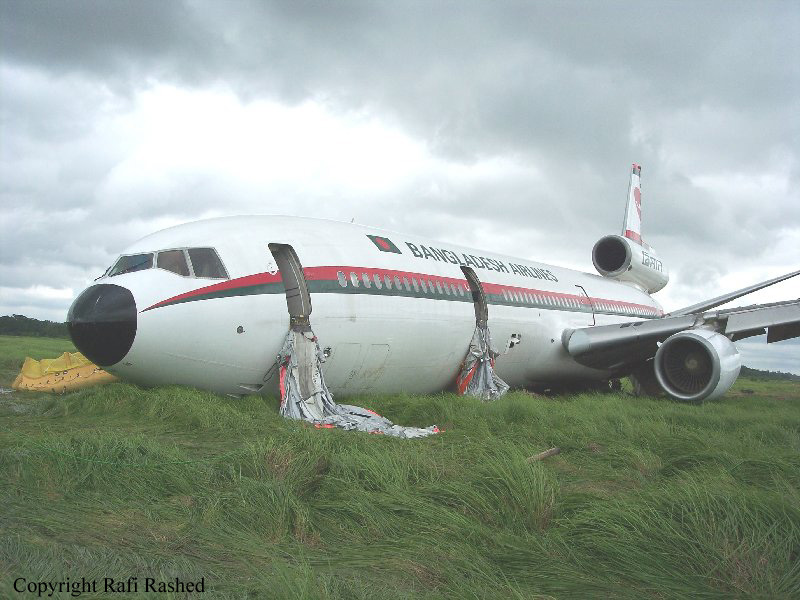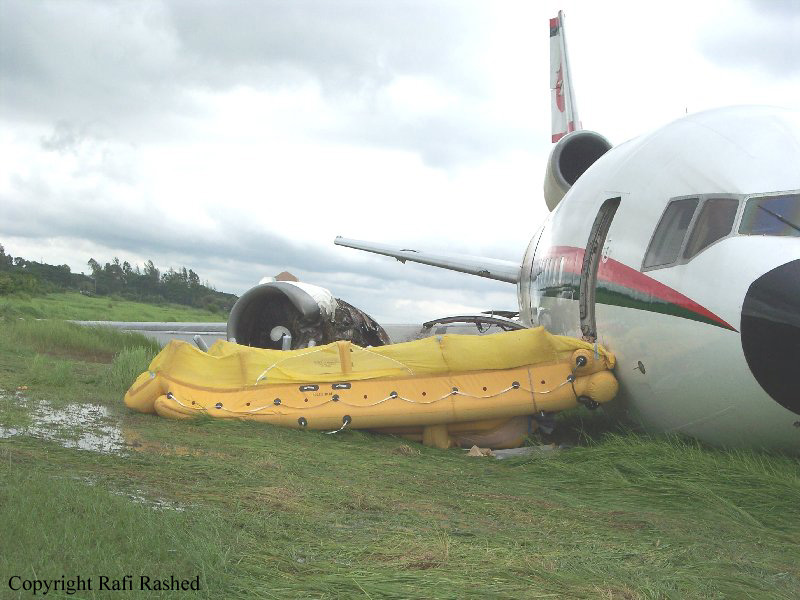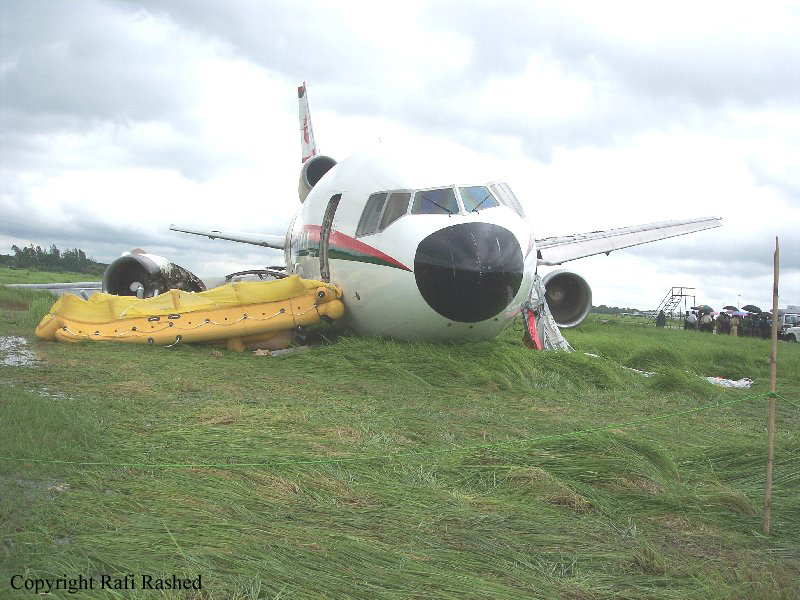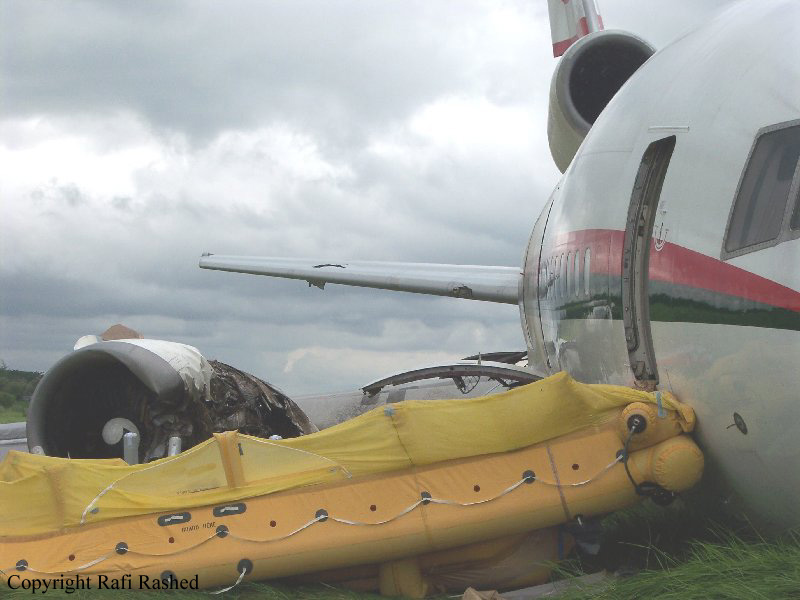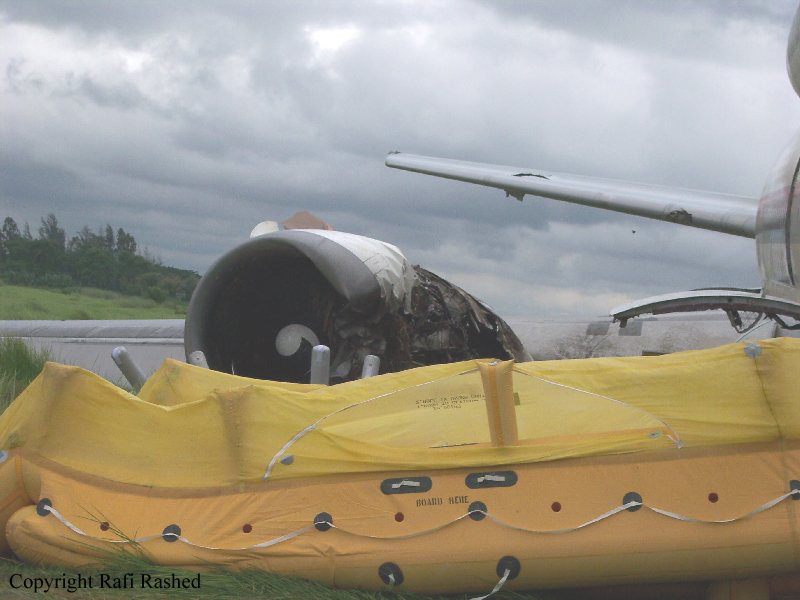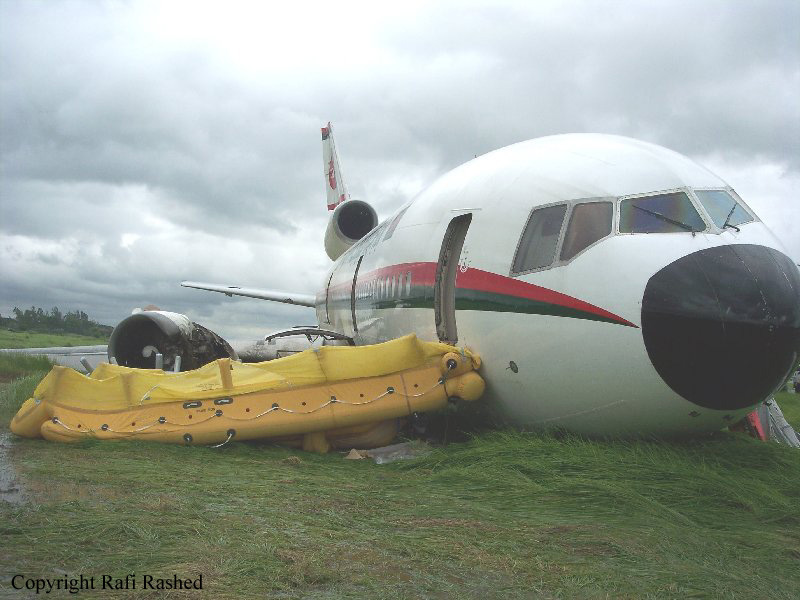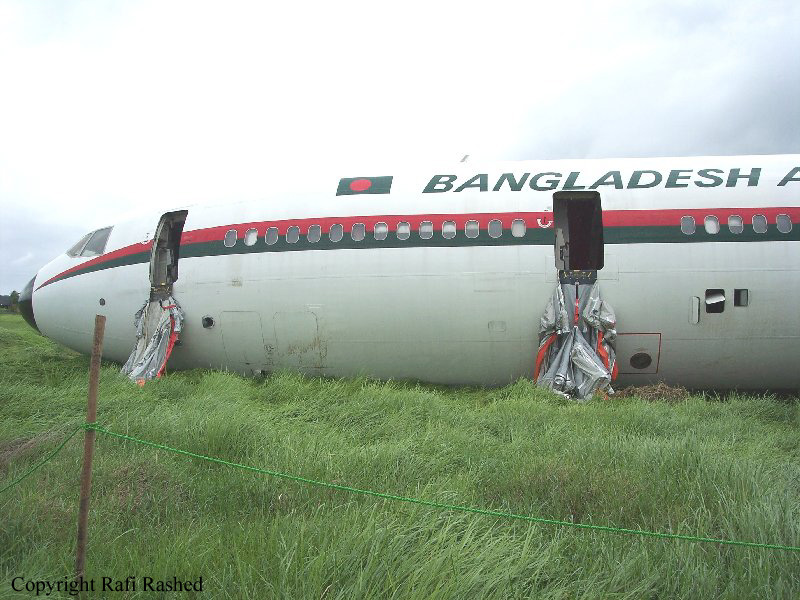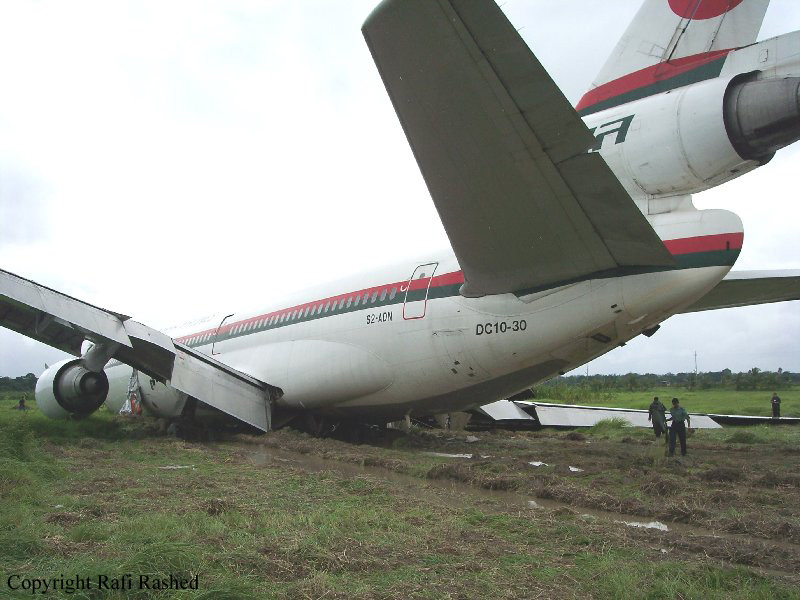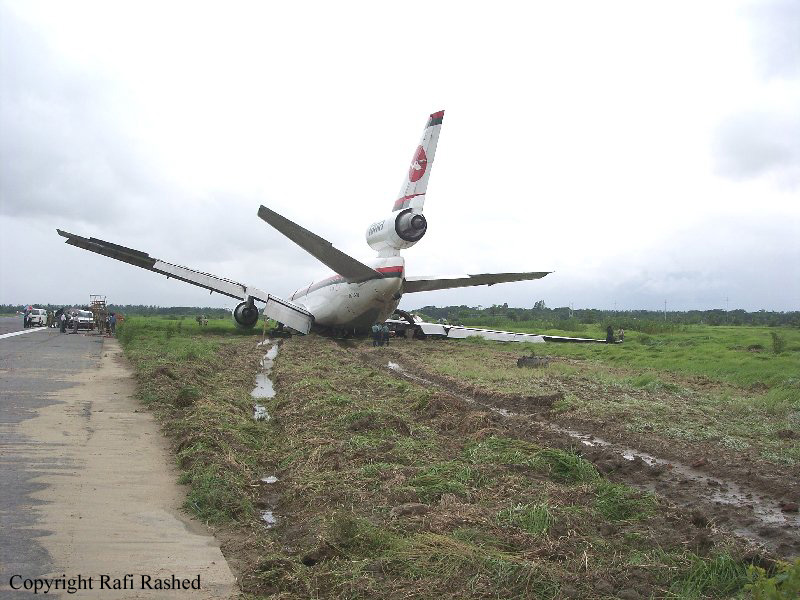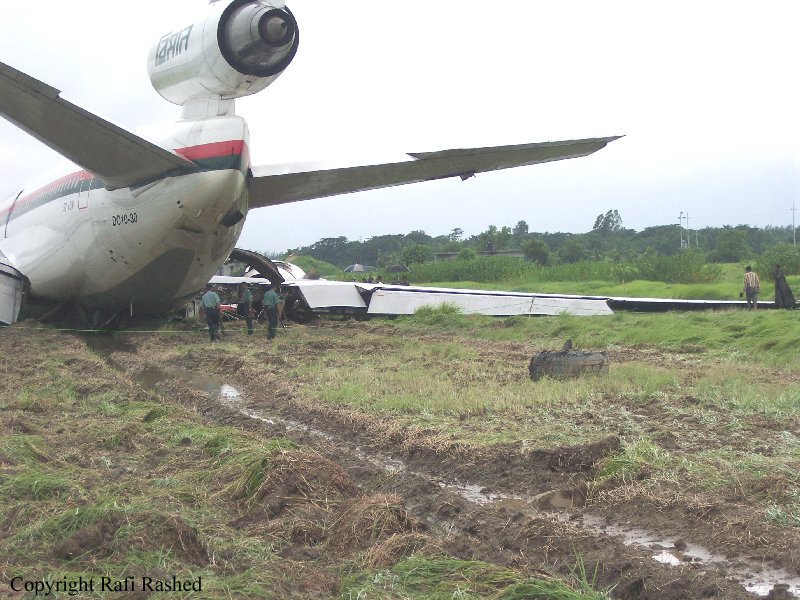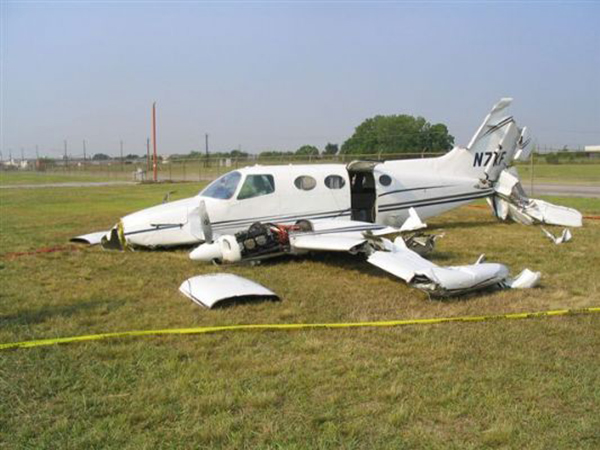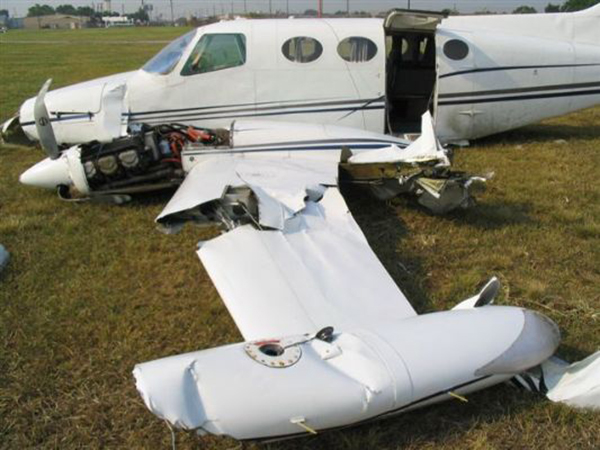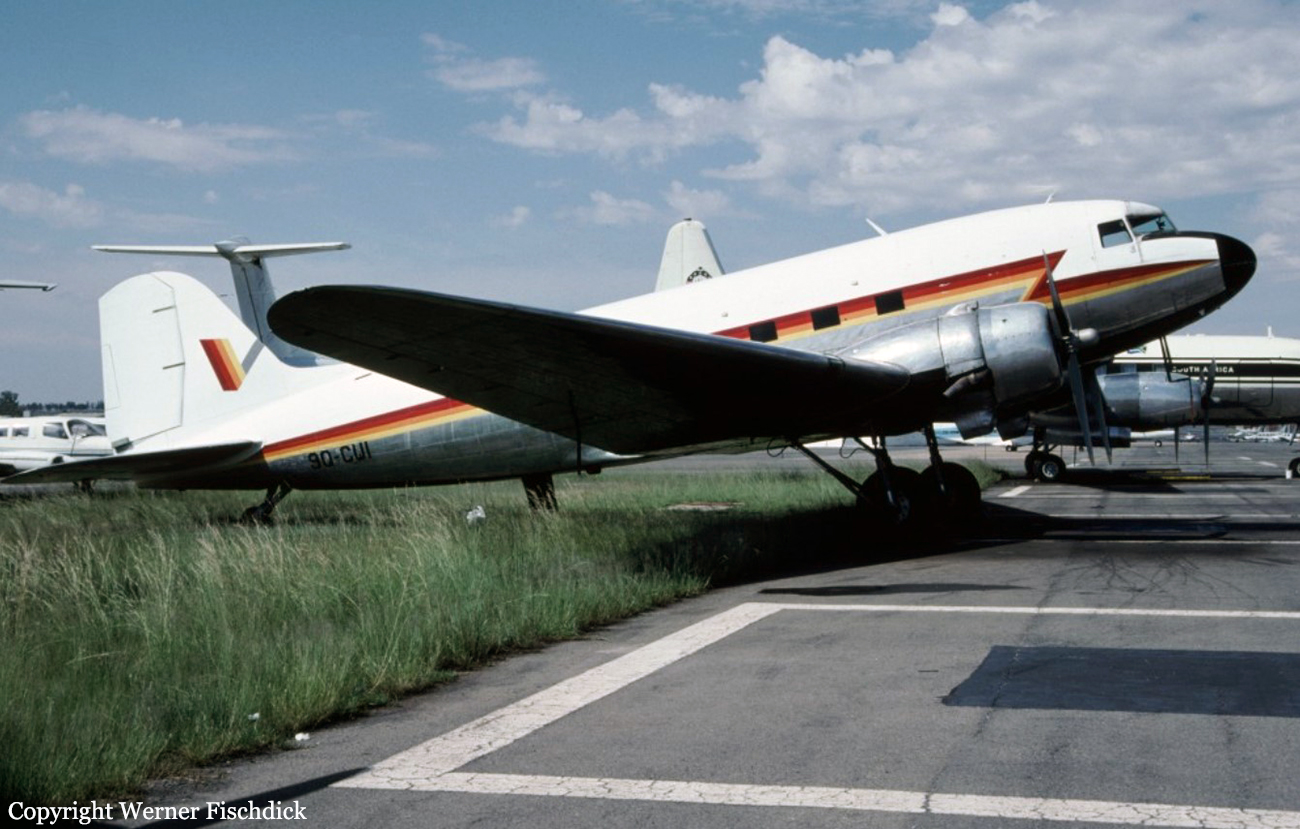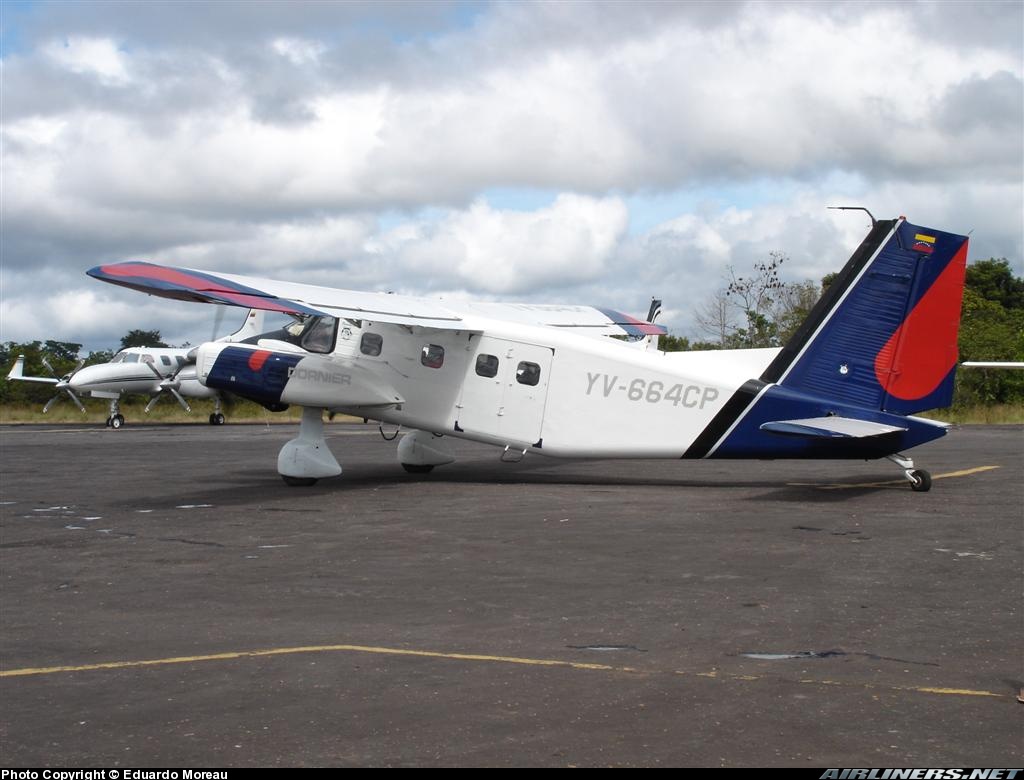Crash of a Douglas DC-10-30ER in Chittagong
Date & Time:
Jul 1, 2005 at 0853 LT
Registration:
S2-ADN
Survivors:
Yes
Schedule:
Dubai - Chittagong - Dhaka
MSN:
46542
YOM:
1979
Flight number:
BG048
Crew on board:
15
Crew fatalities:
Pax on board:
201
Pax fatalities:
Other fatalities:
Total fatalities:
0
Circumstances:
The aircraft departed Dubai on a flight to Dhaka with an intermediate stop in Chittagong, carrying 201 passengers and a crew of 15. Weather conditions at Chittagong Airport were poor with a visibility of 1,800 metres in rain, 5-7 oktas cloud at 700 feet, 3-4 oktas cloud at 1,300 feet, 0-2 oktas cloud at 2,600 feet, overcast at 8,000 feet with CB's, temporary visibility of 2 km and wind from 180 at 6 knots. On final approach, the aircraft was unstable but the captain decided to continue the descent. After touchdown on runway 23, the aircraft deviated from the centerline to the right, causing the right main gear to veer off runway. While contacting soft ground, it was torn off, causing the engine n°3 to be partially sheared off. The aircraft slid for few dozen metres before coming to rest in a grassy area along the runway. All 216 occupants evacuated safely and the aircraft was damaged beyond repair.
Probable cause:
Wrong approach configuration on part of the crew who failed to follow the SOP's and his failure to initiate a go-around while the aircraft was unstable on short final.
